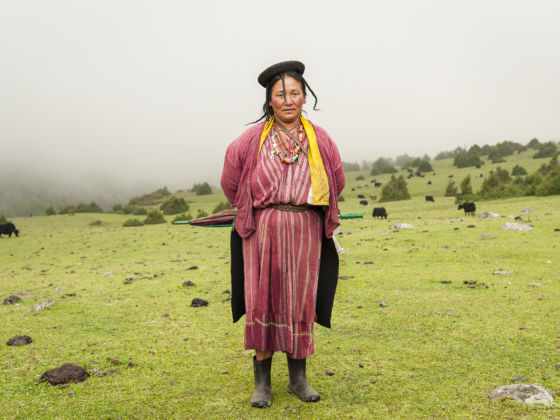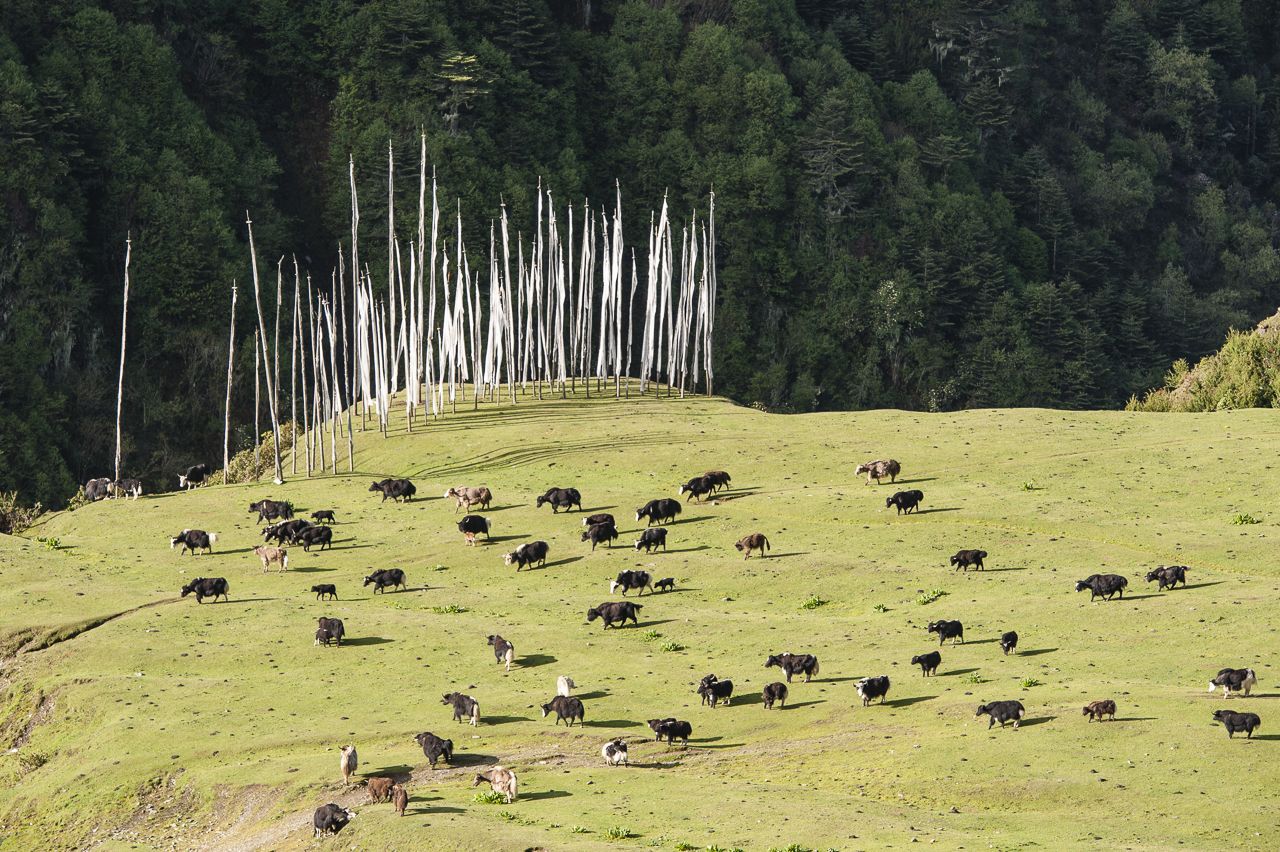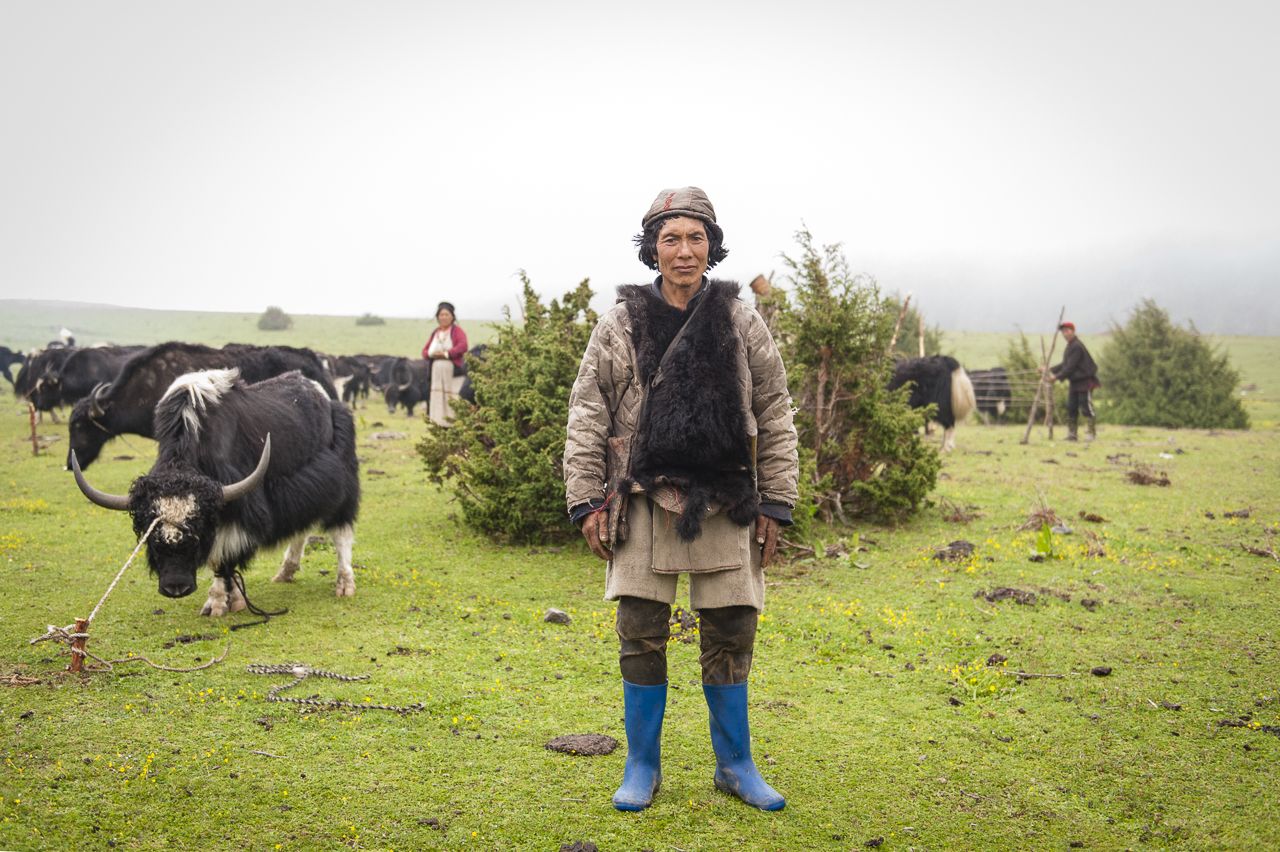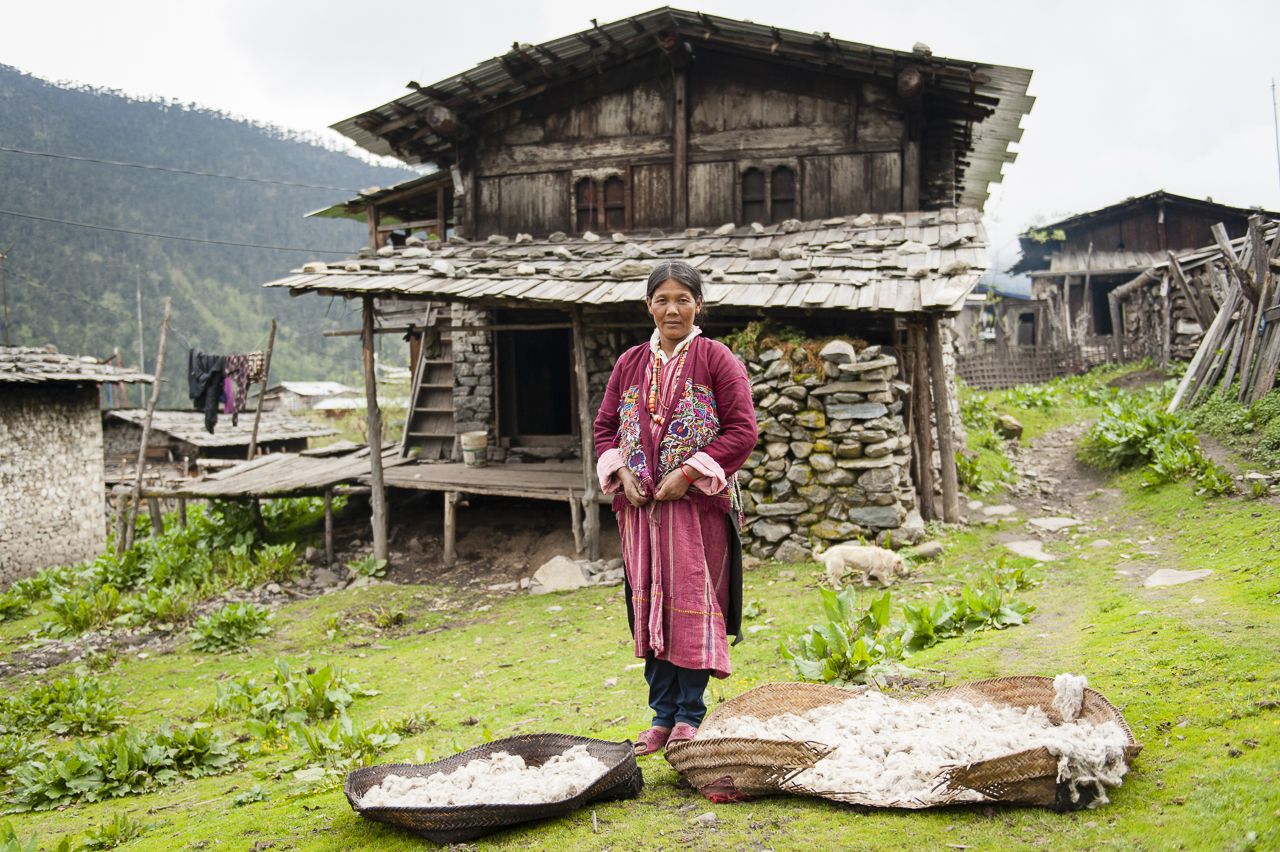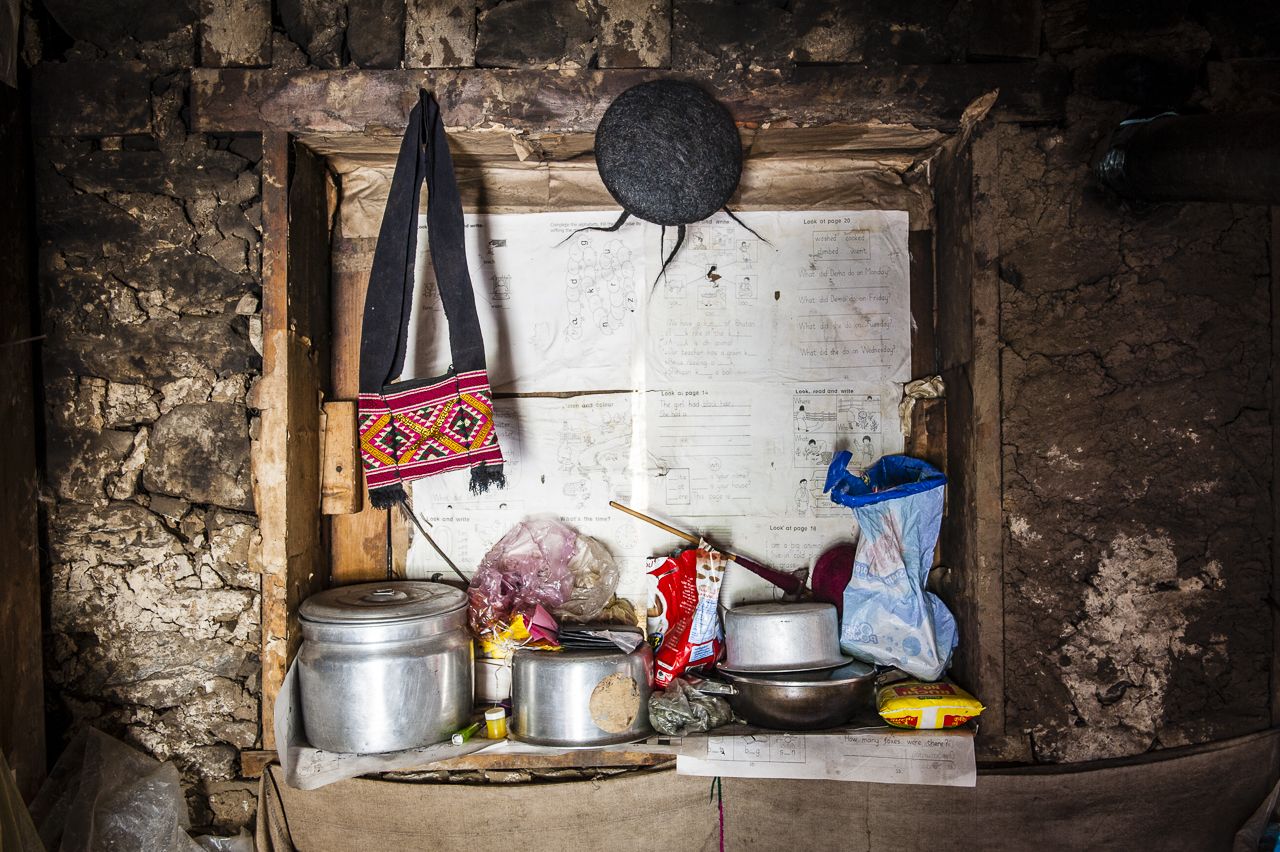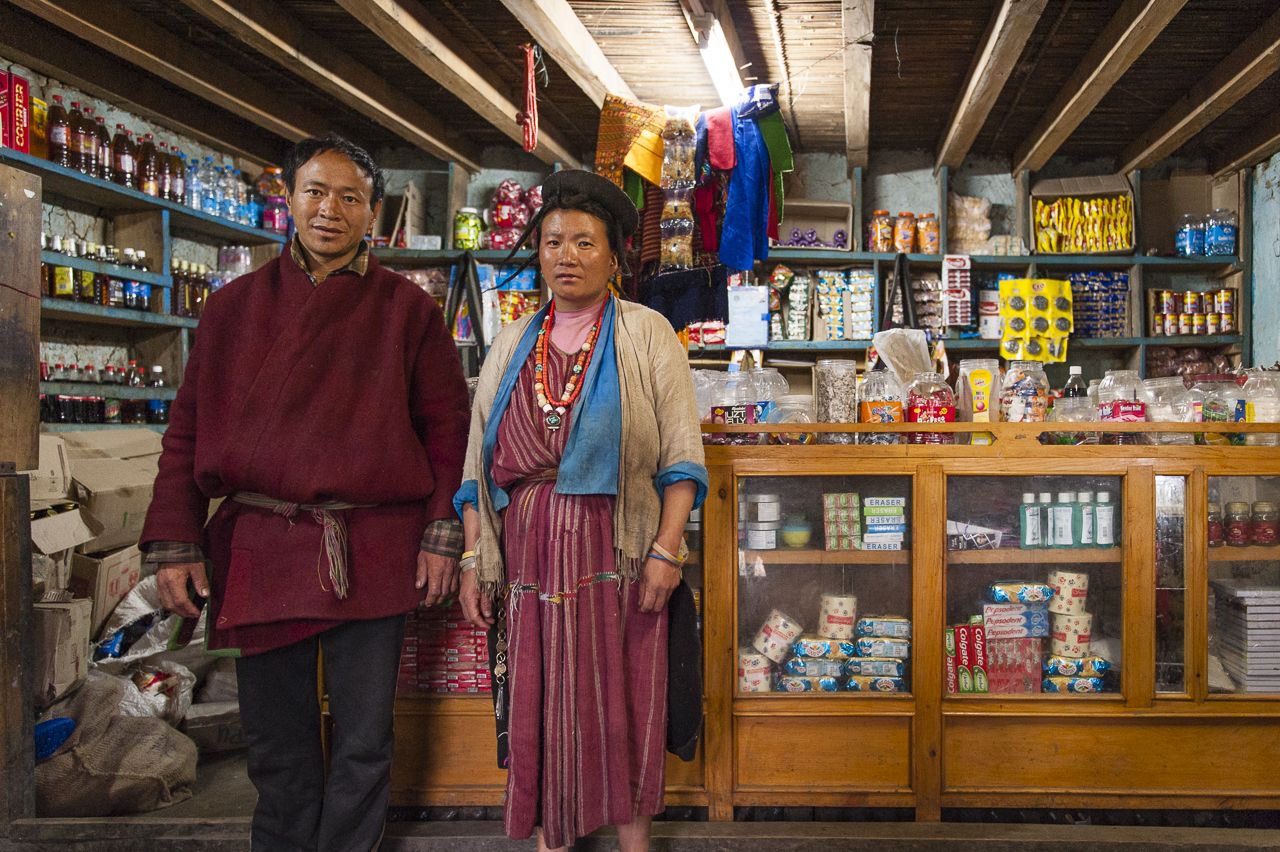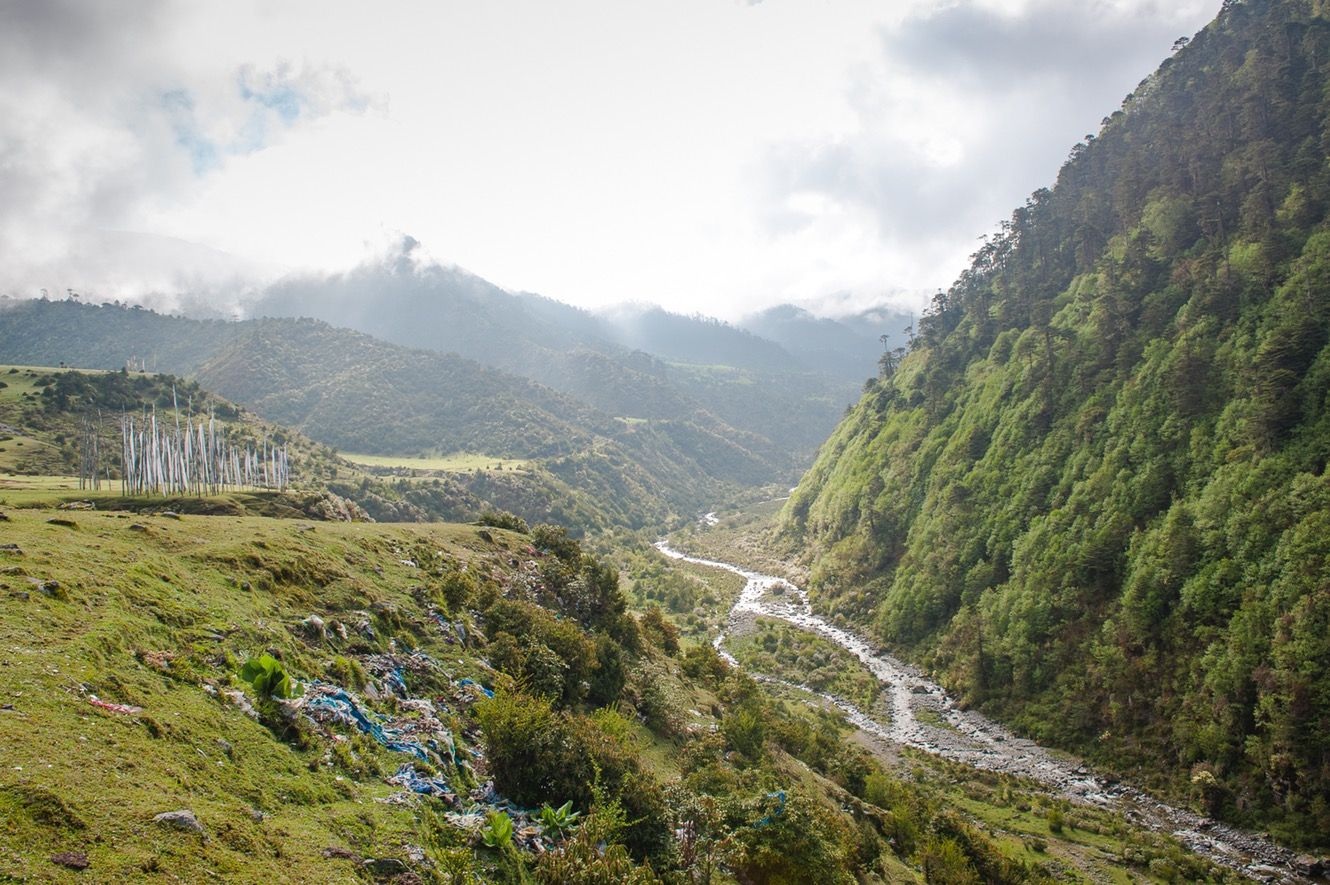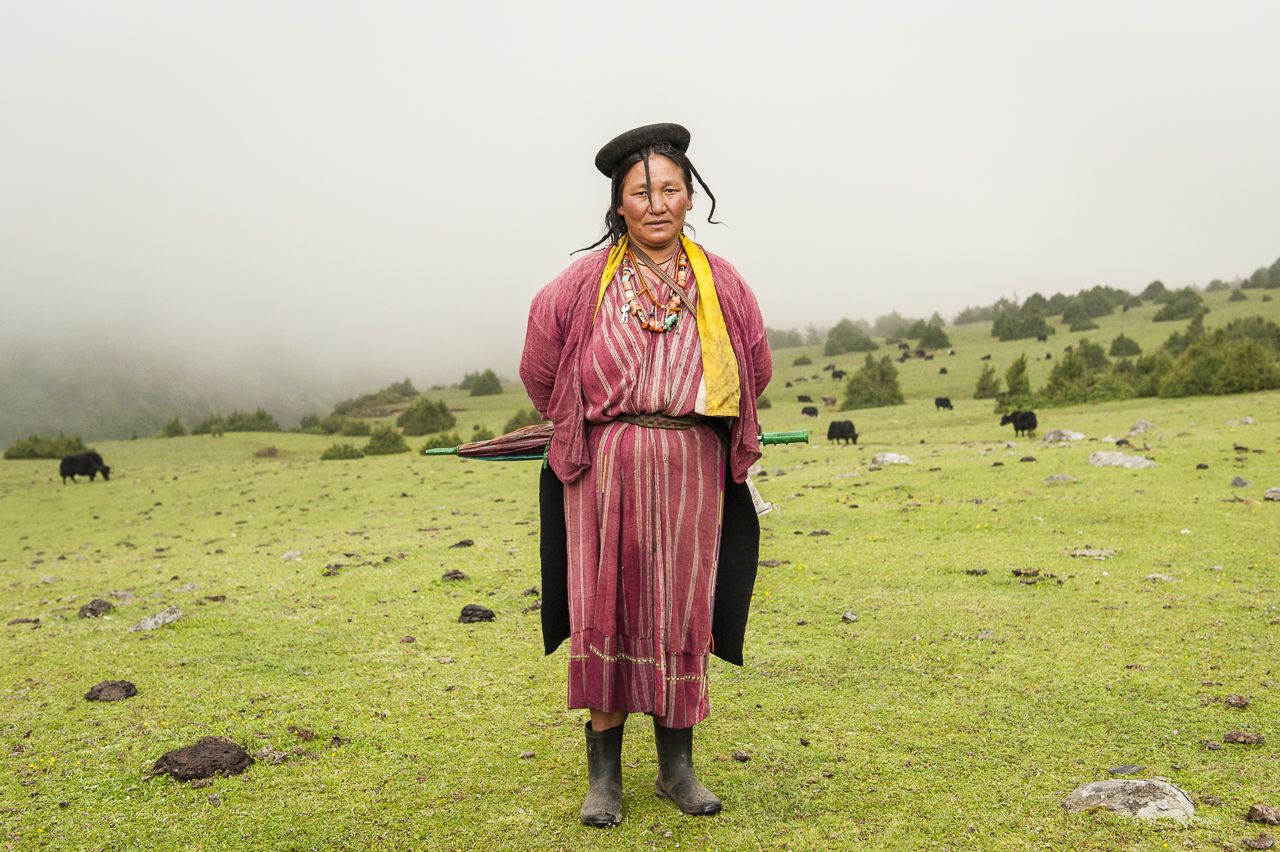
End of the road
The last decade has seen the Kingdom of Bhutan undergo a rapid transition. Transforming from a closed Buddhist Kingdom into a constitutional democracy, the country is now admired worldwide for its uncompromising pursuit of “Gross National Happiness.”
However, as Bhutan’s development accelerates, its government and people are engaged in a tireless struggle to simultaneously preserve their traditions and keep the country’s unique identity alive.
Traditional ways of living and cultural practices, particularly those in rural communities, are quickly disappearing in the quest for modernized lifestyles and less laborious job opportunities. In an attempt to combat this loss of culture that globalisation inevitably brings, the government has drafted a heritage bill, which they hope will protect the traditions of isolated communities like the Brokpa tribe, who have herded yak in the remote far eastern corner of Bhutan for centuries.
During the warmer summer months the Brokpa live a semi-nomadic life, as they search for fresh pasture land for their yak. Constantly on the move, each night the yak calfs are caught and tethered in a makeshift pen near the herders’ campsite, to protect them from attack by predators and to have the cows ready for milking in the morning.
Each year in May and June, the harvesting of yak hair takes place. Only the castrates and females will be sheared, while the breeding bull retains its coat, so that it will look more dominant in front of other bulls. Below you see a reluctant yak being dragged towards its annual hair cut. The Brokpa still spin yak hair, using a drop spindle called a yoekpa, however, the use of traditional hand woven yak wool tents is declining rapidly, as plastic tarpaulins become more readily available.
The Brokpa are ethnically distinct from other Bhutanese, having migrated through the Himalayas from the Tshoona region of Tibet a few centuries ago. Traditions and culture passed down over the ages still play a central role in their social life. They mostly depend on yaks and sheep for their livelihood and do not typically grow crops due to the high altitude zones they inhabit. They speak a unique dialect and worship their own deities.
They wear a singular style of dress, made famous by their distinctive yak felt hat, known as a tsipee cham, which has long twisted tufts, said to prevent the rain from running into their faces. A very hospitable people, drinking butter tea is a regular part of life and is always served to guests. Since yak butter is the main ingredient, it provides plenty of calories and the herders are often said to drink more than thirty cups a day.
The Brokpa still use a barter system, and exchange their yak products for grains, oil, salt, sugar, and chillies in the neighbouring gewogs (groups of villages) and also in Arunachal Pradesh, in India. Below you see a freshly wrapped batch of yak butter, wrapped in rhododendron leaves.
Wealth within the Brokpa society is assessed on the heads of livestock. For example, a wealthy Brokpa may have 150 to 180 yaks, in addition to other animals such as horses and sheep. The middle class Brokpa may own 20 to 50 yaks, while the poorest may own as few as two or none.
Women command a high degree of respect from their husbands and children and often function as the head of the family. They are pivotal in deciding such matters as marriage of their children, when to migrate during the summer months, and in taking charge of the family finances.
Polyandry is often practiced in these communities, and it is a common norm for a women to marry all the brothers in a family. This prevents their ancestral land being partitioned over time and by using this system a family can pool its resources, for instance, one husband can be away on a trading mission, whilst the others are able to tend the yak at home.
During the winter months the Brokpa retreat to their homes in the small villages of Merak and Sakten to escape the freezing conditions. Wedged between glacial valleys of the Greater Himalayas, these settlements are remote in the extreme. Merak village lies at 3,500m above sea level, and has a population of just over 1,900 individuals, with 213 dwellings.
For centuries, the only way to visit has been to complete a grueling multi-day trek, along river valleys and over a 4,300m pass. This is all about to change. Within the next few months the first road is due to be completed and the pressure to modernize will become exacerbated. The tranquil peace of the Sakteng Wildlife Sanctuary is shattered by the sound of heavy machinery, as diggers cut the new road through the mountainside.
For now, as you walk around Merak’s narrow lanes, it is quickly apparent that apart from the introduction of electricity in 2012 and communal taps of running water, little has changed in centuries. Rails of yak meat dry in the sun, women sit on their porches weaving traditional blankets on back strap looms, and around every corner you are likely to encounter a caravan of yak lugging goods into the village. Below you see 45-year-old Tshewang Choden, drying sheep’s wool outside her home in Merak.
Once the wool has been made into cloth, the women then spend hours dying it red, so that it can be tailored into the traditional red jackets the men wear for Brokpa festivals. Yak yarn is also carefully woven into blankets to keep families warm during cold winter months.
Like many developing countries, Bhutan is experiencing massive rural–urban migration, with thousands of people leaving the villages in search of better lives in the cities. Basic living standards, a lack of alternative job opportunities, and unhappiness are all important contributors to migration. This is particularly seen in the younger generations, whose departure results in the loss of community vitality and values.
Due to the lack of infrastructure in the village, children have to leave home in order to get their secondary education in other areas of Bhutan. Below you see pages from a young child’s English school book, plastered over the cracks to try and block the cold drafts entering their home.
There is some debate on whether these isolated communities have missed out on mainstream development, with some arguing that the government wanted to conserve these villages as ‘living museums’ to satisfy high-end tourists. International tourists can only visit Bhutan on an organized tour, which, alongside a daily visa fee to the government, can cost around $250 a day. Even so, at some local Tshechus (festivals), tourists are now almost outnumbering the locals. With prayer flags now competing for position with mobile phone masts, many are surprised to find that Bhutan is no longer the last Shangri-La they were promised.
Within the last few years shops have started to appear, bringing with them the added issue of non bio-degradable packaging. As the road slowly encroaches on the village, more and more goods become readily available, which has a great impact on their lifestyle and diet.
Rubbish disposal is also a growing problem for the village, and non-biodegradable waste littering the hillside on the outskirt of the village. Bhutan banned plastic bags in 1999, but sadly this has not reduced the growing problem of waste or the harmful effect on the environment.
Today, with the road nearly completed, change for the Brokpa tribe is unavoidable, and reliance on their yak is bound to diminish over time. Many, like 45-year-old Tshewang Choden, are excited and expect that the new road will bring greater amenities and services to their village. Tshewang tells me, “The road makes me happy. It will greatly improve my family’s living conditions and make life easier.”
The traditional Brokpa way of life, and their close relationship with the yak, hasn’t changed in centuries. Only time will tell whether the new road, along with the increased number of tourists it is bound to bring, will deliver everything that these communities hope, or whether their unique identity will also be lost in the race to modernize?
This article originally appeared on Maptia and is republished here with permission.
